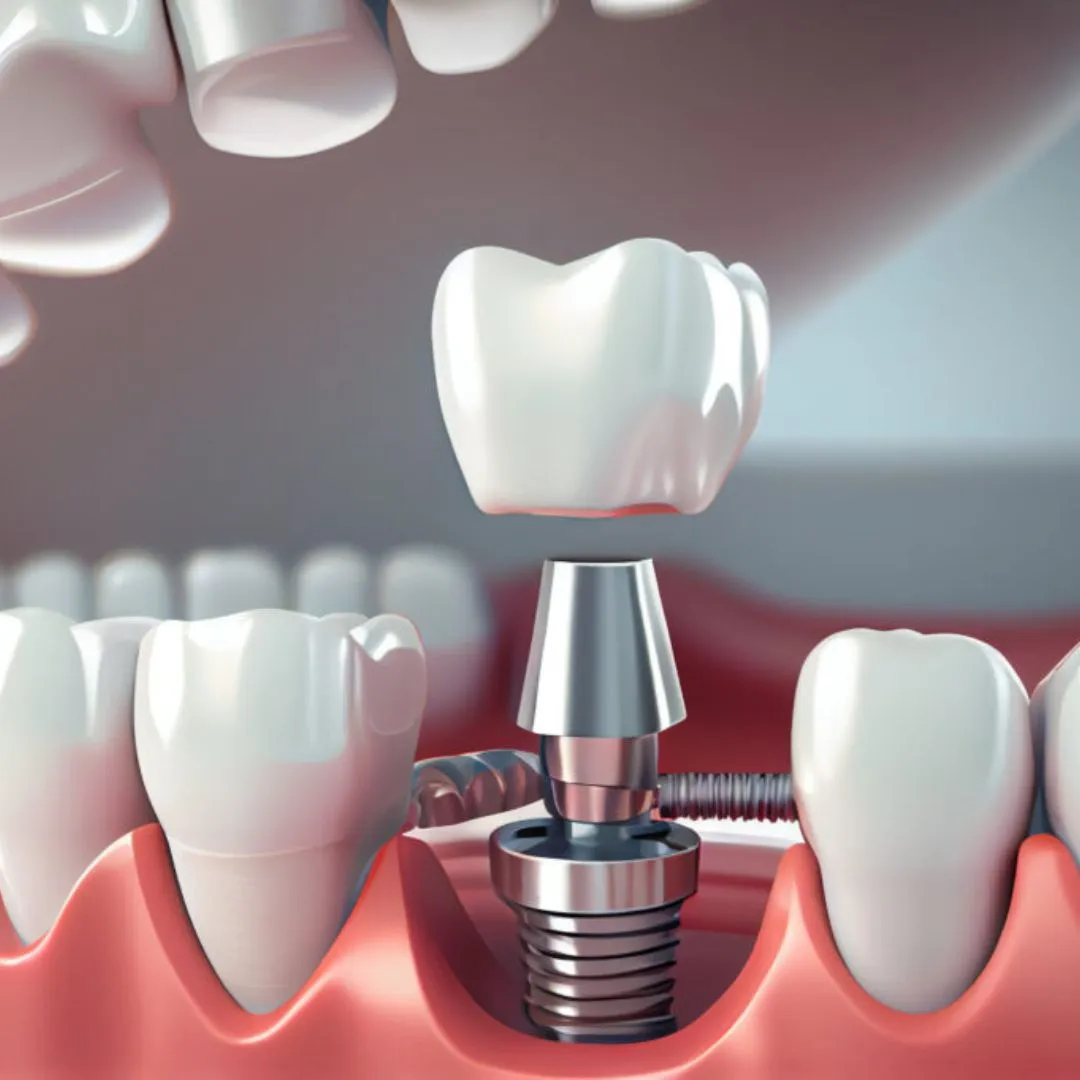Dental Implants: Complete Guide to Costs and Treatment Options
Dental implants represent the gold standard in modern tooth replacement technology. These titanium posts surgically placed into the jawbone serve as artificial tooth roots, providing a stable foundation for crowns, bridges, or dentures. The procedure involves precise surgical placement of biocompatible materials that fuse with natural bone tissue through a process called osseointegration.
The implant structure consists of three main components: the implant post, the abutment, and the crown. The post acts as the root replacement, while the abutment connects the implant to the visible crown. This three-piece system allows for customization and maintenance while providing exceptional stability and functionality.
Cost Factors That Influence Dental Implant Pricing
Several key factors determine the overall cost of dental implant treatment. Geographic location plays a significant role, with urban areas typically commanding higher prices due to increased overhead costs and demand. The complexity of individual cases affects pricing, as patients requiring bone grafting or sinus lifts face additional expenses.
The type of implant system chosen influences costs. Premium brands with extensive research and development backing often carry higher price tags, while newer or less established manufacturers may offer more affordable options. The surgeon's experience and specialization level also impact pricing, with oral surgeons and periodontists typically charging more than general dentists.
Material Quality and Brand Considerations
Implant materials vary in quality and cost. Titanium implants remain the most common choice due to their biocompatibility and proven track record. Zirconia implants, while more expensive, offer metal-free alternatives for patients with specific aesthetic concerns or metal sensitivities.
Leading implant brands like Straumann, Nobel Biocare, and Zimmer Biomet command premium pricing due to their extensive clinical research and proven success rates. These systems often include comprehensive warranties and have established track records for long-term success.
Single Tooth Implant Costs and Considerations
Single tooth implant replacement typically ranges from $1,500 to $6,000 per tooth, depending on various factors. This cost includes the implant post, abutment, and crown, though some practices itemize these components separately. Additional procedures like bone grafting or sinus lifts can add $500 to $3,000 to the total cost.
The healing period for single implants usually spans three to six months, during which osseointegration occurs. Temporary solutions may be necessary during this period, adding to the overall treatment cost. Premium materials and advanced surgical techniques may increase costs but often result in better long-term outcomes.
Treatment Timeline and Associated Costs
The treatment timeline for single implants involves multiple appointments spread over several months. Initial consultation and treatment planning typically cost $100 to $300. Surgical placement ranges from $1,000 to $3,000, while the final crown restoration costs $500 to $1,500.
Additional procedures that may be required include tooth extraction ($150 to $400), bone grafting ($300 to $1,200), and temporary crown placement ($300 to $800). These procedures extend the treatment timeline and increase overall costs.
Multiple Implant Solutions and Pricing
Multiple missing teeth can be addressed through various implant-supported solutions. Implant-supported bridges typically cost $3,000 to $15,000, depending on the number of missing teeth and complexity of the case. This option uses fewer implants than individual tooth replacement, making it more cost-effective for multiple adjacent missing teeth.
All-on-4 or All-on-6 solutions for complete arch replacement range from $15,000 to $40,000 per arch. These systems use strategically placed implants to support full-arch prosthetics, offering significant cost savings compared to individual implant placement for every missing tooth.
Implant-Supported Dentures
Implant-supported dentures provide superior stability compared to traditional dentures. Costs typically range from $7,000 to $20,000 per arch, depending on the number of implants used and the type of attachment system employed. Removable implant-supported dentures cost less than fixed solutions but still provide improved retention and comfort.
The number of implants required affects pricing significantly. Two-implant supported lower dentures represent the most economical option, while four to six implants provide optimal stability and function. Fixed implant-supported dentures require more implants but eliminate the need for removal and cleaning.
Insurance Coverage and Financial Considerations
Dental insurance coverage for implants varies significantly among providers and plans. Many insurance plans classify implants as cosmetic procedures, providing limited or no coverage. However, some plans cover portions of implant treatment, particularly when deemed medically necessary.
Pre-authorization is crucial for maximizing insurance benefits. Submit treatment plans to insurance providers before beginning treatment to understand coverage limitations and out-of-pocket expenses. Some plans may cover the crown portion while excluding the implant and abutment.
Financing Options and Payment Plans
Many dental practices offer financing options to make implant treatment more accessible. Third-party financing companies like CareCredit provide payment plans with various interest rates and terms. Some practices offer in-house financing with no-interest payment plans for qualified patients.
Health Savings Accounts (HSAs) and Flexible Spending Accounts (FSAs) can be used for implant treatment, providing tax advantages for eligible expenses. These accounts allow patients to use pre-tax dollars for qualified medical and dental expenses.
Quality Versus Cost: Making Informed Decisions
While cost is an important consideration, prioritizing quality and experience often leads to better long-term outcomes. Choosing qualified practitioners with extensive implant experience reduces the risk of complications and treatment failures. Board-certified oral surgeons and periodontists typically have specialized training in implant placement.
Treatment planning quality affects long-term success rates. Advanced imaging technologies like cone beam CT scans provide detailed anatomical information, improving surgical precision and outcomes. These technologies may increase upfront costs but often result in better treatment results.
Long-Term Value and Durability
Dental implants offer exceptional long-term value compared to other tooth replacement options. With proper care, implants can last 20 years or more, making them cost-effective over time. Traditional bridges typically require replacement every 10-15 years, while partial dentures may need frequent adjustments and replacements.
The preservation of adjacent teeth represents additional value. Unlike bridges, implants don't require reducing healthy adjacent teeth, maintaining overall oral health. This conservative approach prevents future problems and associated costs.
Factors Affecting Regional Pricing Variations
Geographic location significantly impacts implant pricing. Metropolitan areas with higher costs of living typically have higher dental fees. Rural areas may offer lower prices but potentially limited access to specialized implant providers. Cross-border dental tourism has become popular, with patients traveling to countries with lower costs.
Local competition affects pricing within markets. Areas with many implant providers may have more competitive pricing, while regions with limited specialists may command higher fees. Research multiple providers within reasonable travel distances to compare pricing and qualifications.
Practice Overhead and Operational Costs
Dental practice overhead varies significantly, affecting pricing structures. Practices in prime locations with high rent, extensive staff, and advanced equipment typically charge higher fees. However, these practices may offer advantages like convenient scheduling, comprehensive services, and state-of-the-art facilities.
Continuing education and certification maintenance costs influence pricing. Doctors who invest in advanced training and technology may charge premium fees but often provide superior treatment outcomes. This investment in professional development benefits patients through improved techniques and technologies.
Complications and Additional Costs
While implant treatment has high success rates, complications can occur, potentially increasing costs. Implant failure, though rare, may require removal and replacement. Infection, nerve damage, or sinus problems can necessitate additional treatment and expenses.
Preventive measures help minimize complication risks. Proper patient selection, thorough treatment planning, and adherence to surgical protocols reduce the likelihood of problems. Patients with certain medical conditions or lifestyle factors may face higher complication risks.
Maintenance and Long-Term Care Costs
Ongoing maintenance costs for implants are generally minimal but should be considered. Regular dental cleanings and checkups are essential for implant longevity. Professional cleanings may cost slightly more due to specialized techniques required for implant maintenance.
Occasional component replacement may be necessary over time. Crowns may need replacement after 10-15 years due to wear or aesthetic changes. Abutments and implant posts rarely require replacement when properly maintained.
Technological Advances and Future Pricing Trends
Technological advances continue to influence implant treatment costs. Computer-guided surgery and 3D printing technologies improve precision and efficiency, potentially reducing treatment times and costs. These innovations may increase initial equipment costs but often lead to better outcomes and reduced complications.
Immediate loading protocols allow for faster treatment completion, reducing the number of appointments and associated costs. Same-day implant placement and restoration have become more predictable, offering convenience and cost savings for appropriate cases.
Market Competition and Pricing Evolution
Increased competition in the implant market has led to more affordable options without compromising quality. New manufacturers entering the market provide cost-effective alternatives to established brands. This competition benefits patients through improved access to implant treatment.
Dental schools and residency programs often offer implant treatment at reduced costs, providing training opportunities for students under experienced supervision. These programs can provide significant cost savings while maintaining treatment quality.
Making the Best Decision for Your Situation
Choosing the right implant treatment requires careful consideration of multiple factors beyond cost. Treatment complexity, expected outcomes, and long-term goals should guide decision-making. Consulting with qualified practitioners helps ensure appropriate treatment planning and realistic expectations.
Multiple consultations provide valuable perspectives on treatment options and costs. Different practitioners may recommend varying approaches based on their experience and philosophy. Compare treatment plans, costs, and practitioner qualifications to make informed decisions.
The investment in dental implants extends beyond immediate costs to encompass long-term oral health benefits. Proper planning and execution of implant treatment can provide decades of improved function, aesthetics, and quality of life, making it a worthwhile investment in overall health and well-being.











